철학과 마음의 치유 - 니체, 심층심리학, 철학상담치료
김정현 (지은이)책세상2013-02-25
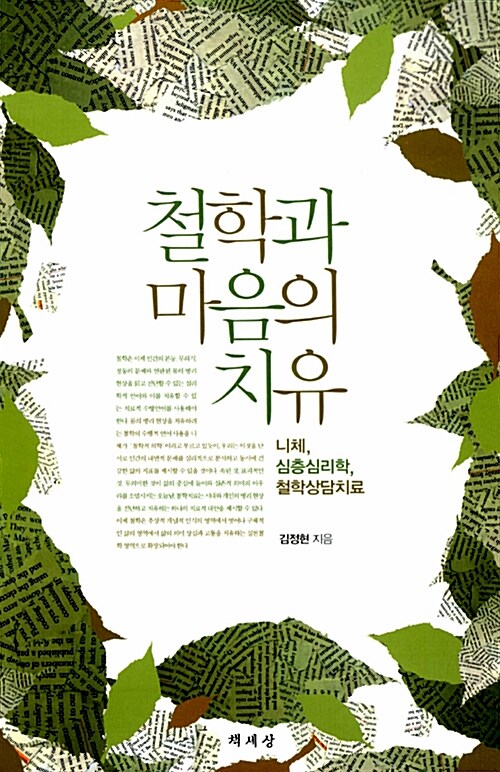





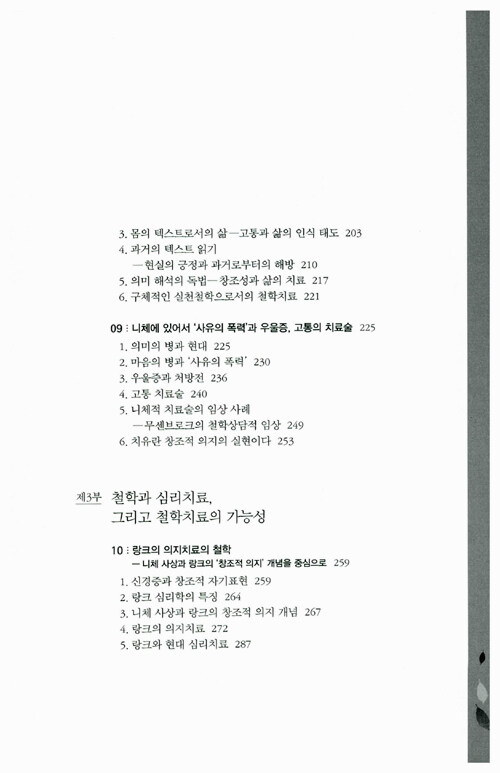


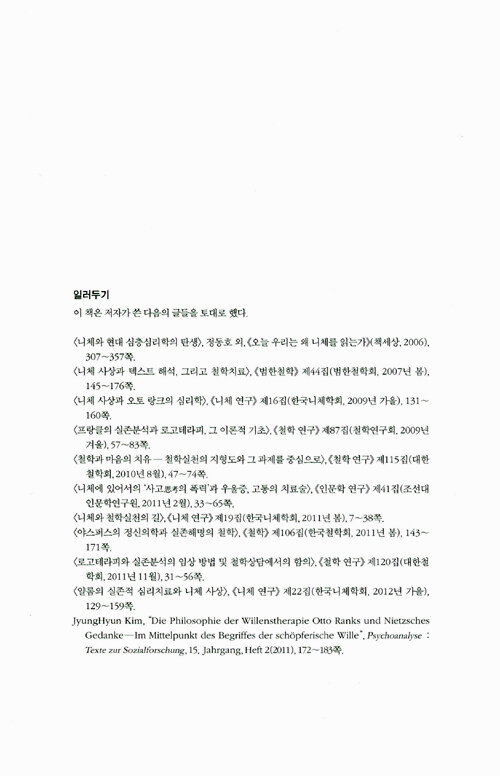

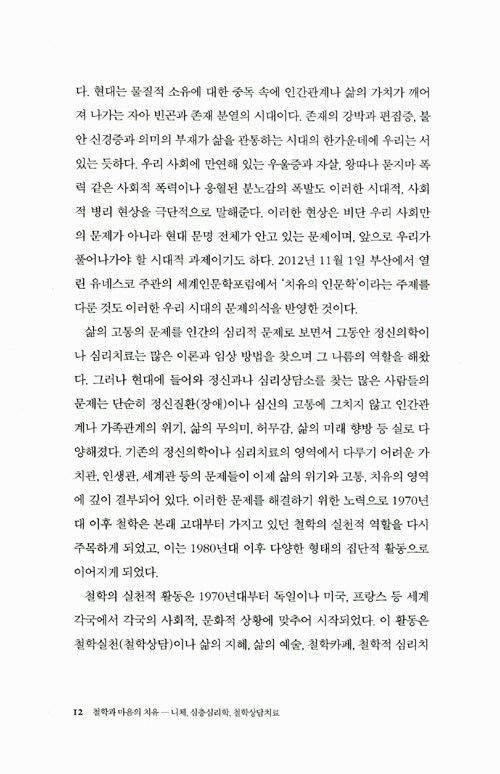


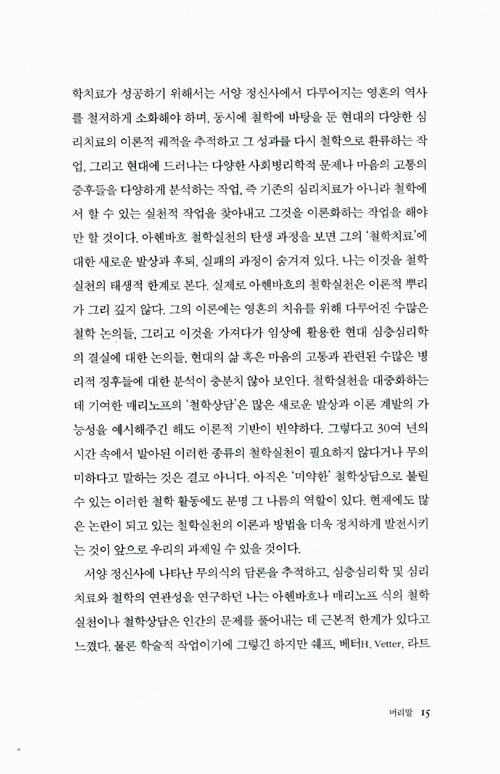





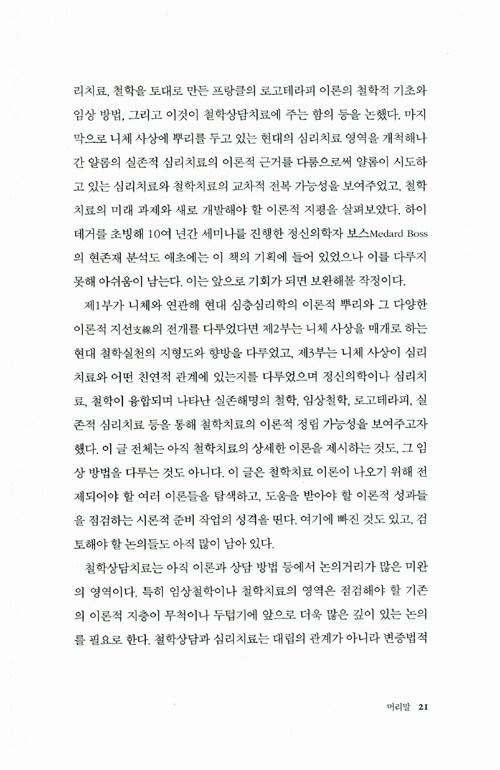




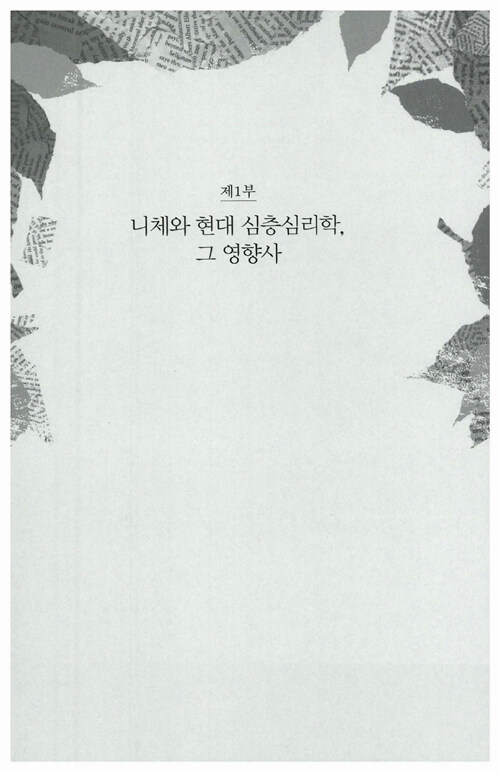





Sales Point : 448

이 책 어때요?
전자책
16,100원

454쪽
책소개
‘니체’ 철학을 중심에 두고 이 물음에 천착해온 김정현 교수의 오랜 연구의 결실이다. 니체에서 촉발된 ‘무의식의 철학적 담론’에 관심을 기울여온 저자는 서양 정신사 전체를 관통하는 무의식의 담론을 추적하는 과정에서 영혼을 치유하는 심층심리학과 심리치료의 세계를 만났고, 삶의 고통을 치유하는 실천과 관련된 영역으로 연구를 확장했다.
이 책은 그러한 작업의 산물로서 ‘철학치유’, ‘철학치료’를 위한 이론적 모색이라고 할 수 있다. 저자는 니체 철학에서 현대 심층심리학의 학문적 뿌리를 찾는 동시에, 니체 사상을 매개로 현대 철학실천의 지형도를 살피며, 실존해명의 철학과 로고테라피 등을 통해 철학상담치료/임상철학의 가능성을 모색한다.
목차
머리말
제1부 니체와 현대 심층심리학, 그 영향사
01:니체와 현대 심층심리학의 탄생
1. 철학과 심리학, 그리고 심리학자로서의 니체
2. 니체 사상의 심리학적 성격
3. 니체와 철학상담치료
02:니체와 프로이트의 정신분석학
1. 서양 정신사 속의 니체와 프로이트
2. 프로이트에게 미친 니체의 영향
3. 니체 사상과 정신분석 이론
03:니체와 융의 분석심리학
1. 융의 니체 읽기
2. 융과 프로이트의 대결, 그리고 니체
3. 니체의 후기 사상과 분석심리학
04:니체와 아들러의 개인심리학
1. 아들러의 니체 읽기
2. 니체 사상과 개인심리학
3. 니체와 아들러의 차이, 그리고 아들러 심리학의 현대적 기여
05:니체와 랑크의 의지치료
1. 삶과 창조의 문제
2. 니체와 랑크의 만남
3. 니체 철학의 영향과 랑크의 심리학
4. 랑크의 의지치료와 현대 심리치료
제2부 니체와 철학실천, 철학치료의 이론적 지평
06:철학실천과 철학치료의 지형도
1. 왜 오늘날 마음의 치유가 필요한가?
2. 영혼의 치료와 현대의 심리치료에 대한 철학적 조감
3. 철학실천의 지형도
4. 철학치료
5. 철학실천과 그 과제
07:니체와 철학실천의 길
1. 철학실천의 다양한 길
2. 니체와 철학실천
3. 니체와 삶의 예술
4. 니체와 심리치료
5. 니체와 철학실천의 과제
08:니체와 텍스트 해석, 그리고 철학치료
1. 실존적 공허함과 철학치료의 필요성
2. 삶의 텍스트로서의 세계-관점주의와 해석
3. 몸의 텍스트로서의 삶-고통과 삶의 인식 태도
4. 과거의 텍스트 읽기-현실의 긍정과 과거로부터의 해방
5. 의미 해석의 독법-창조성과 삶의 치료
6. 구체적인 실천철학으로서의 철학치료
09:니체에 있어서 ‘사유의 폭력’과 우울증, 고통의 치료술
1. 의미의 병과 현대
2. 마음의 병과 ‘사유의 폭력’
3. 우울증과 처방전
4. 고통 치료술
5. 니체적 치료술의 임상 사례-무센브로크의 철학상담적 임상
6. 치유란 창조적 의지의 실현이다
제3부 철학과 심리치료, 그리고 철학치료의 가능성
10:랑크의 의지치료의 철학-니체 사상과 랑크의 ‘창조적 의지’ 개념을 중심으로
1. 신경증과 창조적 자기표현
2. 랑크 심리학의 특징
3. 니체 사상과 랑크의 창조적 의지 개념
4. 랑크의 의지치료
5. 랑크와 현대 심리치료
11:야스퍼스의 정신의학과 실존해명의 철학
1. 야스퍼스와 정신의학
2. 야스퍼스 시대의 정신의학과 그의 정신병리학
3. 정신분석 비판과 심리치료의 한계
4. 실존해명의 철학과 철학적 치유의 가능성
5. 실존해명과 임상철학의 과제
12:프랑클의 로고테라피와 실존분석, 그 이론적 기초
1. 실존적 좌절과 시대 문제
2. 프랑클 이론의 배경-정신분석과 개인심리학
3. 프랑클이 말하는 인간학의 전제
4. 실존분석과 로고테라피의 성격과 내용
5. 로고테라피와 현대
13:프랑클의 로고테라피와 실존분석의 임상 방법, 그리고 철학상담에서의 함의
1. 현대와 실존적 공허
2. 로고테라피와 실존분석의 특징
3. 로고테라피와 실존분석의 인간학적 전제
4. 로고테라피와 실존분석의 적용 영역
5. 로고테라피와 임상 방법
6. 로고테라피와 철학실천(철학상담)
14:얄롬의 실존적 심리치료와 니체 사상
1. 실존적 불안과 실존적 심리치료
2. 실존적 심리치료란 무엇인가?
3. 얄롬의 실존적 정신역동
4. 얄롬의 실존적 심리치료와 니체 사상
5. 얄롬의 니체 해석- 심리치료와 철학치료의 교차적 전복
6. 실존적 심리치료와 철학상담치료
참고문헌
찾아보기-인명
찾아보기-서명
찾아보기-용어
접기
추천글
‘철학이 세상 사람들을 위해 실천적으로 무엇을 할 수 있을까?’라는 질문에 대해 많은 철학자들이 고민하면서 나름대로의 답을 제시해왔다. 이와 관련해 저자는 철학이 ‘삶의 치료제’로서의 역할을 해야 한다는 칸트의 말을 상기시키면서 철학의 실천적인 치료적인 역할에 각별히 주목한다. 철학은 인간의 마음을 치료(치유)할 수 있는 능력을 지니고 있고 또 그럴 수 있다는 것이다. 이러한 생각은 인간 마음(심리)의 치료는 정신의학이나 심리학에서만 담당해야하는 것이 아니라, 철학 또한 여기에 참여할 수 있다고 보는 최근의 철학적 경향과 그 궤를 같이 한다. 저자는 물질 중심적이고 소비지향적인 현대사회 속에서 현대인은 불안, 우울증, 허무감, 자기부정, 인간관계의 위기, 삶의 가치 혼란과 같은 실존적 고통을 겪고 있다고 본다. 한 마디로 삶의 공허함과 무의미성 속에서 현대인은 방황하고 있는 것이다. 이를 극복하기 위해서는 우선 자신에 대한 내면적 대화와 성찰을 통해 자기 긍정과 자기 존중의 태도를 갖도록 하고 이에 근거해 스스로 삶을 긍정하고 여기에 의미부여할 수 있는 능력을 키워야 한다. 저자는 이를 가능케 하는 방법적인 실마리를 니체 철학에서 찾을 수 있다고 본다. 니체의 철학 속에는 스스로가 스스로를 치유하는 ‘자기치유’의 해법이 들어 있으며, 그럼으로써 ‘자신의 삶을 긍정하고 미래를 조형할 수 있는 의지’를 활성화할 수 있는 철학적 내용이 담겨있다는 것이다. 곧 현재의 삶에 대한 긍정과 이를 위한 삶에의 의지를 강조하는 니체 철학은 현대인의 마음을 철학적으로 치유해 줄 수 있는 적절한 대안이라는 것이 그의 생각이다. 이를 뒷받침하는 설득력 있는 근거로서, 저자는 니체로부터 영향을 받은 랑크, 프랑클, 얄롬 등의 구체적인 심리치료 이론을 소개하면서 이들의 이론과 니체철학과의 연관성 나아가 이것이 철학 상담치료에서 가질 수 있는 의미를 살펴보기도 한다. 이 책은 이처럼 니체철학을 중심으로 한, 철학의 치료적 의미에 대한 저자의 오랜 연구의 결과물로서 니체를 단순한 사변적 철학자로서가 아니라 일관되게 (심층)심리학적으로 바라보고 논의를 전개하고 있다는 점이 특별히 돋보이는 책이다.
- 박인철 (경희대 철학과 교수)
저자 및 역자소개
김정현 (지은이)
저자파일
신간알리미 신청
고려대학교 철학과와 같은 학교 대학원에서 철학을 전공하고, 독일 뷔르츠부르크대학에서 철학, 사회학, 종교학을 공부한 뒤 철학박사 학위를 받았다. 세계표준판 니체전집 한국어본(전 21권, 책세상)의 편집위원과 한국니체학회·범한철학회·대한철학회 회장을 역임했다. 원광대학교 철학과 교수로 있으며, 중앙도서관장을 역임했다. 현재 한중관계연구원장, 동북아인문사회연구소장으로 HK+사업단의 책임을 맡고 있다.
저서로 《니체의 사회 철학Nietzsches Sozialphilosophie》, 《니체의 몸 철학》, 《니체, 생명과 치유의 철학》, 《철학과 마음의 치유》, 《소진 시대의 철학》 외 다수가 있으며, 역서로 알프레트 쉐프의 《프로이트와 현대철학》, 니체의 《선악의 저편.도덕의 계보》, 《유고(1884년 가을-1885년 가을)》, 야스퍼스의 《기술 시대의 의사》, 살로메의 《살로메, 니체를 말하다》 외 다수가 있다. 접기
최근작 : <동북아, 니체를 만나다>,<소진 시대의 철학>,<니체의 미학과 예술철학> … 총 24종 (모두보기)
출판사 제공책소개
“철학자는 시대의 고통과 인간 영혼의 상처를 읽고 치유하는 철학적 의사다”_니체
삶의 고통, 치유의 철학 : : 니체 철학으로 보는 심층심리학의 철학적 기원과 철학치료의 가능성
세계 최고의 자살률, 왕따와 폭력, 분노와 우울증, 고독과 불안…오늘날 우리 사회의 초상이 이렇듯 심각한 사회적?심리적 병리 현상으로 얼룩져 있음을 부인하기 어렵다. “자아 빈곤과 존재 분열”의 시대, “의미의 부재가 삶을 관통하는” 시대, 인간과 삶의 가치가 깨어져 나가는 시대의 한복판에서, 어쩌면 그 반작용으로 ‘힐링’이 경쟁적으로 소비되고 있다. 시대의 고통과 영혼의 상처 앞에서 철학자는, 철학은 무엇을 할 수 있을까? 일시적인 위안이나 약물?심리 치료를 넘어, 인간의 마음을 이해하고 삶의 고통의 근원을 파고드는 진정한 치유의 길로 나아갈 수 있을까? ‘삶의 방식’으로서의 철학이 철학의 본래적 모습이라면 그 치유적 언어와 실천 활동을 어떻게 회복할 수 있을까?
이 책은 ‘니체’ 철학을 중심에 두고 이 물음에 천착해온 김정현 교수(원광대)의 오랜 연구의 결실이다. 니체에서 촉발된 ‘무의식의 철학적 담론’에 관심을 기울여온 저자는 서양 정신사 전체를 관통하는 무의식의 담론을 추적하는 과정에서 영혼을 치유하는 심층심리학과 심리치료의 세계를 만났고, 삶의 고통을 치유하는 실천과 관련된 영역으로 연구를 확장했다. 이 책은 그러한 작업의 산물로서 ‘철학치유’, ‘철학치료’를 위한 이론적 모색이라고 할 수 있다. 저자는 니체 철학에서 현대 심층심리학의 학문적 뿌리를 찾는 동시에, 니체 사상을 매개로 현대 철학실천의 지형도를 살피며, 실존해명의 철학과 로고테라피 등을 통해 철학상담치료/임상철학의 가능성을 모색한다. 인간의 마음이 작동하는 방식을 탐색하는 심층심리학을 폭넓게 이해하면서도 더 근원적인 지점을 파고드는 철학상담 혹은 철학치료의 고유한 영역을 찾고 있는 것이다.
이러한 시도는 철학이 구체적인 삶의 영역으로 내려와 자기인식과 삶의 치유에 기여해야 한다는 생각과 닿아 있다. 저자에 따르면 철학은 이제 인간의 본능, 무의식 등과 관련된 몸의 병리 현상을 진단하는 심리학적 언어와 이를 치유할 수 있는 치료적 수행언어를 사용해야 한다. 니체가 이러한 활동을 ‘철학적 의학’이라고 부르듯, 이것을 단서로 인간 내면의 문제를 심리적으로 분석하고 건강한 삶의 지표를 제시할 수 있다는 것이다. “철학치료는 시대와 개인의 병리 현상을 진단하고 치유하는 하나의 치료적 대안을 제시할 수 있다. 이제 철학은 추상적 개념적 인식의 영역에서 벗어나 구체적인 삶의 영역에서 삶의 의미 상실과 고통을 치유하는 실천철학 영역으로 확장되어야 한다.”
니체 철학의 광맥에서 치유의 언어를 캐다 : : 니체와 철학실천의 과제
“도대체 나 이전의 어떤 철학자가 심리학자였던가…최초의 심리학자라는 것은 하나의 저주일 수도 있다. 어찌 되었든 이것은 하나의 운명이다.” ―니체
니체는 자전적 저서《이 사람을 보라》에서 최초의 심리학자를 자처하며, 철학을 심리학적으로 재구성함으로써 서양 정신사 전체를 해체하고 인간의 정신세계를 다시 볼 것을 요구한 바 있다. 전통적 형이상학의 세계관이 이론적 허구였음을 밝히고, 인간의 영혼에 대한 심층적 통찰을 제시하면서 인간의 도덕적 가치에 대한 탐구를 모색한 것이다. 저자에 따르면 근대성 비판이나 종교 비판, 허무주의 분석이나 문화 비판, ‘자기’찾기나 몸의 예술, 큰 정치 등 니체 철학을 구성하는 주요한 문제들은 심리학으로서의 철학에 기초하여 과거의 사유 전통을 비판하는 동시에 미래의 사유 가능성을 실천적으로 모색하는 것이다.
이렇듯 니체는 철학과 심리학의 경계를 넘나들며 도덕, 심리, 문화, 종교 등 인간 세계와 삶의 역학을 폭로하는 계보학적 작업을 수행했고, 따라서 그의 저작에는 영혼의 기제(마음의 작용 원리)와 자기기만, 고통, 삶의 의미와 해석, 자기계발, 극복의 의지, 치료적 언어 등이 산재해 있다. 니체의 철학은 프로이트의 정신분석학, 융의 분석심리학, 아들러의 개인심리학, 랑크의 의지치료의 심리학, 랑크의 정신분석학 등 현대 심층심리학의 형성과 발전에 중요한 역할을 담당했으며, 심층심리학에 기초한 실존적 심리치료, 인본주의 심리치료, 로고테라피 같은 다양한 심리치료에 영향을 미쳤다. 또한 1980년대 이후 일어난 철학실천의 다양한 활동, 즉 아헨바흐의 철학실천, 슈미트의 삶의 예술, 베르더의 철학적 심리치료 등에도 지대한 영향을 미쳤다.
이러한 영향은 인간의 영혼과 심리적 심층 세계의 언어를 찾아내 인간을 보다 깊이 이해할 수 있는 단서를 마련해주었다. 저자는 근대가 제기한 문화적 데카당스나 자기균열의 고통에 대해 자기긍정, 현실 긍정, 생명 긍정이라는 치유제를 제공한 니체의 철학은 현대에도 유효하다고 말한다. 지금 이 세계 역시 균열되어 있고, 인간의 내면세계는 여전히 분열과 불안 속에 부유하고 있기 때문이다. 이 책에서 살펴본 현대 심층심리학이나 정신분석학의 이론 작업에 대한 니체의 영향과 그 성과를 바탕으로 철학실천, 철학상담, 임상철학이라는 새로운 ‘철학상담치료’의 영역을 설계할 수 있을 것이다. “니체의 철학은 삶의 모순과 고통에 대한 날카로운 심리적 통찰과 인간 치유라는 근본적인 문제를 함께 담고 있기에, 우리는 니체 철학 안에서 인간과 삶의 고통을 날카롭게 읽어내고 인간의 몸을 건강하게 만드는 인간 치유의 가능성을 또 하나의 철학적 가능성으로 모색할 수 있다.”
철학에서 치유적 언어를 찾아내고 그것을 현대적 삶의 지평이나 문제 해결과 관련해 재구성하는 작업은 니체에만 한정되는 것은 아니다. 정체성, 삶의 방향, 의미 등의 물음과 그 철학적 해명이 ‘치료의 기반’을 제공하는 만큼, 철학자들의 텍스트를 철학실천의 다양한 입장에서 다시 분석하고 구성하는 철학적 작업은 우리 앞에 놓인 또 하나의 실천적 과제가 될 것이다.
왜 오늘날 마음의 치료가 필요한가 : : 철학실천?철학치료의 지형도와 과제
경쟁과 속도에 강박적으로 노출된 채 물질적 안락과 세속적 가치를 추구하는 현대인은 상실감, 불안, 우울증, 강박증, 인간관계의 위기, 삶의 무의미, 가치 혼란, 정신적 위기로 인한 실존적 고통을 느끼며 살아간다. 개인과 시대의 절박한 문제인 ‘마음’의 병은 기존의 정신의학이나 심리치료의 영역을 넘어서는 것으로, 이 문제에 대한 철학의 실천적?치료적 역할을 요청하고 있다. 이러한 과제 앞에서 철학은 1980년대 이후, 삶의 의미 상실이나 정체성에서 고통을 느끼는 사람들이 스스로 문제를 극복할 수 있도록 하는 실천적 운동을 시작했다. 철학실천(철학상담), 삶의 기예(삶의 지혜, 철학카페, 삶의 예술), 철학치료(철학적 심리치료, 임상철학) 등 철학의 실천활동과 연관된 다양한 철학적 운동이 그것이다. 저자에 따르면 이러한 실천철학의 모습은 “인간의 실존적 공허감이나 의미 상실을 치유할 항체를 확보하려는 노력이자 삶의 윤리를 정초하려는 욕구를 반영하는 시대적 징후”이다. 또한 상아탑에 고립된 철학이 현실에 접합되고 재생될 수 있는 가능성을 보여주는 것이기도 하다.
이 책은 마음의 치유?치료와 관련된 철학적 실천활동의 지형도를 제시한다. 이러한 활동을 현대적 맥락에서 처음 시작한 이는 1970년대의 쾨스텐바움이고, 이러한 시도가 본격적으로 주목을 받은 것은 1981년 아헨바흐에 의해 주창된 ‘철학실천’을 통해서였다. 아헨바흐의 ‘철학실천’은 자유로운 대화를 통해 내담자의 사고를 따라가면서 철학적 조언을 해줌으로써 삶의 문제를 해결하려는 데서 출발했다. 아헨바흐에 따르면 철학실천은 철학적인 삶의 상담이며, 자유롭고 이성적인 대화를 통해 현재의 구체적인 문제를 함께 생각하며 해결하는 것이다. 그는 철학실천과 심리치료가 협업과 경쟁의 관계, 즉 변증법적 관계에 있다고 보았다.
철학실천은 미국에서 매리노프에 의해 ‘철학상담’으로 변형되어 세계적인 주목을 받고 있다. 매리노프는 자연과학적 모델로서의 형태심리학이나 실험심리학 등 미국의 심리학 전통에 반기를 들고, 철학상담이 삶의 의미, 정체성 혼란, 가치관, 윤리 같은 문제를 해결하는 데 중요한 역할을 할 수 있다고 보았다. 약물치료가 아니라 철학실천이나 철학상담을 통해 삶의 문제를 해결하려고 한 것이다. 그의 접근은 아헨바흐의 철학상담을 왜곡시켰다거나 삶에 대한 대증요법적 해결에 머물렀다는 비판을 받기도 하지만, 철학상담을 세계적으로 확산시키는 데 기여했다.
행복, 자기배려, 덕, 금욕 등을 통해 좋은 삶을 유지하려는 고대철학의 실천적 성격을 이어받은 ‘삶의 기예’ 가운데서도 ‘삶의 예술’의 철학적 근거를 밝히고 이를 실천에 접목하려는 중심인물이 독일의 빌헬름 슈미트이다. 그는 개인의 행복이나 의미체험이 매우 중요하다고 보는데, 사회적 위치가 행복을 보장해주는 것이 아니라 개인의 외부와 내부의 균형이야말로 좋은 삶을 만들 수 있다면서 삶의 균형 예술을 강조한다. 구체적인 철학실천의 내용이나 방법을 제시하지는 못했지만, 그의 삶의 예술 철학은 철학적 심리치료나 임상치료, 철학에서의 치료 연구에 생산적 자극을 주고 있다.
‘철학치료’에서는 베르더의 ‘철학적 심리치료’와 폴트룸의 ‘임상철학’을 대표적으로 꼽을 수 있다. 실천철학자로 불리는 베르더는 글쓰기를 치료적 방법의 하나로 생각했다. 삶의 이야기를 글로 정리함으로써 자신과 대화하고 창조적 자기를 찾게 만든다고 본 것이다. 그는 철학을 기존의 심리치료와는 다른 맥락의 심리치료로 보며, 창조적으로 사유하기와 글쓰기, 동서양의 사유 전통에서 삶의 예술의 가능성을 타진하고 있다. 한편 심리치료사이자 철학자인 폴트룸은 해석학, 정신분석, 현존재 분석, 로고테라피, 현상학, 미학에 기초한 심리치료로서의 철학을 ‘임상철학’ 혹은 ‘철학치료술’로 정립했다. 중독치료 병원에서 철학적 집단상담을 하면서 임상철학 및 철학치료의 효과를 경험한 그는 질병, 고통, 죽음 등 한계상황에 부딪혔을 때 형이상학적 욕구를 갖는 환자의 대화 파트너 역할을 했으며, 철학과 죽음, 자살, 불안, 중독, 의존성 등의 문제를 다루며 미학이론과 철학을 치료에 통합하려고 했다.
마음의 병을 치유/치료하려는 철학의 다양한 실천적 활동은 많은 논란거리와 과제를 안고 있다. 아헨바흐의 철학실천은 영혼의 치유와 관련된 철학 및 현대 심층심리학의 성과 등에 대한 분석이 충분하지 않으며, 매리노프의 철학상담 역시 이론적 토대의 허약함과 상담제도 운영의 문제점으로 인해 철학상담이 뿌리내리는 데 근본적인 한계를 드러내고 있다. 또 슈미트의 삶의 예술 철학은 자기충일감에 기초한 삶의 조형 예술운동이라는 측면에서 의미가 있지만 철학치료로서 충분한 이론적 토대를 갖추지 못한 한계가 있다. 창조적 글쓰기를 치료의 하나로 제안하고 동양적 사유에서 철학적 심리치료의 단서를 찾는 베르더의 노력은 참신하지만, 이론적 깊이를 갖추는 데는 미흡한 점이 많다. 병원에서 환자들과 함께 철학하기를 시도하며 임상철학의 가능성을 시도하고 있는 폴트룸의 노력 역시 철학이 삶의 현실에 기여할 수 있는 미답의 영역이 많다는 사실을 일깨워준다.
이러한 평가를 바탕으로, 저자는 지난 30여 년간 진행되어온 철학적 실천운동에 대해 여전히 ‘현재 진행 중’인 사건이라고 말한다. 이론적 성숙과 더불어, 수많은 심리치료의 성과들을 극복하는 문제와 철학실천 고유의 정체성을 확보하는 문제, 그리고 다양한 방법을 찾아내는 과제가 놓여 있는 것이다. 그리고 더욱 중요한 것은 상담자/실천가의 성숙한 인격을 바탕으로, 삶의 고통을 느끼는 내담자로 하여금 생산적으로 생각하도록 돕는 일이다. “도약하는 체험과 살아 있다는 느낌을 통해 내담자가 자신의 삶의 어려움과 고통을 극복하고 다시금 창조적으로 자신의 삶을 형성할 수 있는 힘과 의식을 갖도록 하는 것, 이것이 철학실천이 지향해야 할 본래의 지향점 아닐까? 철학실천은 인간이 자신의 영혼이나 마음을 치유하며 그 내적 생명력을 회복하도록 돕는 하나의 예술이 되어야 할 것이다.”
지상으로 내려온 철학, 자기인식과 삶의 치유에 기여하다 : : 이론적 지평과 실천의 방향
이 책은 <제1부 니체와 현대 심층심리학, 그 영향사> <제2부 니체와 철학실천, 철학치료의 이론적 지평> 제3부 <철학과 심리치료, 그리고 철학치료의 가능성> 세 부분으로 구성되어 있다. 1부가 니체와 연관해 현대 심층심리학의 이론적 뿌리와 그 다양한 이론적 갈래를 다루었다면 2부는 니체 사상을 매개로 하는 현대 철학실천의 지형도를 살폈고, 3부는 니체 사상이 심리치료와 어떤 관계에 있는지를 다루었으며 정신의학이나 심리치료, 철학이 융합되며 나타난 실존해명의 철학, 임상철학, 로고테라피, 실존적 심리치료 등을 통해 철학치료의 이론적 정립 가능성을 보여주려 했다.
1부는 니체를 매개로 현대 심층심리학의 이론적 뿌리를 파헤치는 고고학적 작업이자 심리치료의 이론적 결실을 규명하는 해석학적 작업이기도 하다. 즉 니체와 현대 심층심리학의 관계, 니체와 철학상담치료의 관계, 심리치료와 철학상담치료의 관계를 살펴보았다. 이 책을 통해, 니체가 현대 심층심리학에 미친 영향은 실로 지대해서 프로이트의 정신분석학, 융의 분석심리학, 아들러의 개인심리학, 랑크의 의지치료의 심리학 등 현대의 심층심리학 이론과 그에 기초한 심리치료가 대부분 니체의 정신적 영향 속에 있었고, 수많은 니체의 통찰과 개념을 심층심리학적 언어로 번안한 것이었음을 확인할 수 있다. 그 이론적 역사와 통찰의 번안사가 1부의 내용이다.
니체와 철학실천, 철학치료의 이론적 지평을 담은 2부에서는 니체 사상이 철학적 실천 활동과 어떤 연관성이 있는지를 추적했다. 먼저 1970년대 초부터 지금까지 진행되어온 철학실천 및 철학상담, 삶의 예술·철학적 심리치료·임상철학 및 철학치료 등 철학의 실천활동의 계보와 발생 과정, 그리고 그것의 다양한 활동 및 이론적 토대 등을 제시한 후, 니체 사상이 각각의 철학적 실천활동과 어떤 친연성이나 이론적 상관성을 지니는지를 살펴보았다. 니체 철학이 철학치료로 기능할 수 있는 이론적 토대, 그리고 사유의 폭력, 우울증, 고통을 치료하는 임상 실천의 가능성도 다루었다.
3부에서는 철학과 심리치료, 철학치료의 가능성을 탐색했다. 2부가 철학실천과의 연관성에 주목했다면, 3부는 철학이 심리치료와의 연관 지평에서 철학치료의 영역으로 확장될 수 있는 가능성을 이론적으로 탐색한 것이다. 특히 10장에서는 니체 사상이 랑크에게 습합되며 ‘의지치료의 철학’으로 전환되고, 이를 통해 현대 심리치료의 지평이 새롭게 열리는 과정을 다루었다. 또 정신의학과 심리학, 철학의 경계를 오간 야스퍼스가 바라본 정신의학과 심리치료, 실존해명의 철학과의 관계도 다루면서 현존의 치유 가능성을 실존해명의 철학으로 살펴보았으며, 정신의학과 심리치료, 철학을 토대로 만든 빅토르 프랑클의 로고테라피 이론에 대해서도 논했다. 마지막으로 니체 사상에 뿌리를 둔 현대의 심리치료 영역을 개척해나간 얄롬의 실존적 심리치료의 이론적 근거를 다룸으로써 그가 시도하고 있는 심리치료와 철학치료의 교차적 전복 가능성을 제시했으며, 철학치료의 미래 과제와 새로 개발해야 할 이론적 지평을 살펴보았다.
접기
내안의 나에게 귀 기울이기. 더 이상 마음의 응어리가 쌓이지 않기를 바라며..
이번 겨울을 보내며 여행을 좋아하는 나는 하나의 슬픈 소식을 접했다. 지난 달 생일을 기점으로 만 25세를 지나면서 더 이상 철도청이 규정한 청소년이 아니게 된 것이다. 더 이상은 내일로 티켓을 끊어 여기저기 다니며 대한민국의 여름과 겨울을 온전히 느끼며 즐기던 때가 있었는데.. 물론 티켓뿐만 아니라 어느 순간 훌쩍 떠날 수 있는 시간의 자유로움도 없기는 하다.
더 많은 책임의 무게는 나의 어깨에 얹혀있고 이제는 그 누구의 도움도 받지 않고 고스란히 혼자 해내야 하는 차례다. 과연 내가 잘 할 수 있을까. 두려움이 앞선다. 누군가에게 이러한 나의 마음을 속 시원히 터놓고 이야기하고 싶다. 하지만 이미 별일 아니라는 듯 흘려듣는 모습을 겪은지라 말을 꺼내기가 쉽지 않다. 누구나 한번쯤은 겪는 성장통일뿐이라고 치부해버리는 모습에 나도 모르게 상처 받았었나보다.
미래에 대한 불안함과 나에 대한 두려움에 쌓여 여러 가지 생각으로 맘이 어지러웠다. 봄이 왔다고 전국이 들썩이는 날씨에도 나갈 엄두도 나지 않는다. 그냥 그렇게 우중충하게 방 안에 있었다. 무언가 답답함이 느껴지기는 하지만 정확하게 무엇인지는 알지 못했다. 찾아보면 방법을 알 수 있을 것 같은데 혼자서는 시작이 어렵다. 어디서부터 어떻게 시작해야하는지 전혀 감이 오지 않는다.
그렇게 매 순간을 불안한 상태로 지내오다 우연히 들렀던 서점에서 <철학과 마음의 치유>라는 이 책이 눈에 띄었다. 내 눈에 확 들어온 부분은 당연히 마음의 치유. ‘어디 얼마나 마음의 치유를 해주나 한 번 볼까. 니체, 심층심리학, 철학상담치료라는 부제를 보니 이론으로 그것이 가능할 것도 같다. 이왕이면 배울 수 있는 이론이라면 더 좋겠다.’는 생각도 든다.
사실 철학이라는 단어가 제목에 들어가 있지 않았다면 나는 이 책을 선택하지 않았을 것이다. 나는 평소 의심이 많은 사람은 아니지만 무턱대고 긍정의 힘만을 설파하며 개인에게 모든 문제를 떠넘기려는 얄팍한 이야기를 하는 요즘 강의나 책들이 영 마음에 들지 않았기 때문이다.
책을 읽다 보니 전반적으로 니체의 철학을 중심으로 심층심리학과 연관시켜 이야기하고 있었다. 기초학문이니까 나의 삶과는 별 상관이 없을 거라고 생각했던 내가 어리석었다. 그동안 어렵다고만 생각했던 철학이론이 우리 삶을 이해하고 설명하는데 사용될 수 있다는 것이 진심으로 놀라웠다. 그동안 내가 잘 알지 못했던 랑크, 야스퍼스, 프랑클, 얄롬이라는 학자들에게 끼친 영향에 대해서도 상세하게 설명해줘서 그 발전과정에 대해서도 보다 쉽게 이해할 수 있었고, 이 심층심리학 이론들이 하나의 실용적인 방법으로써 나의 복잡한 마음을 이해하는데 도움이 될 것이라는 점이 확고해졌다.
단지 이런 이론들이 있다고 설명만 하고 끝나는 것이 아니라 우리 스스로 마음의 고통에 대해 진지하게 생각하고 고민할 때 그것을 해결하는 하나의 방법이 될 수 있다는 철학상담치료의 가능성을 보여준다. 이 철학상담치료라는 새로운 개념은 바로 실생활에 도입되어 눈에 보이는 결과를 얻을 순 없지만 나의 마음속 그 원인에 대해 분석하고 파악하는 정도까지는 이미 도달한 듯하다.
나는 이 책을 통해 철학을 통한 상담 또한 마음치료의 한 방법으로써 그 가능성을 알게 되었고, 타인에게 도움 받지 않으면서도 오랜 시간 연구된 이론으로 내 안의 마음을 치유할 수 있다는 생각에 들뜨게 되었다. 이제 더 이상 방황하지 않고 한 걸음 한 걸음씩 내안의 목소리에 다가가보고자 한다. 내안의 나에게 귀 기울이며 더 이상 마음의 응어리가 쌓이지 않기를 바래본다.
- 접기
히포 2013-03-11 공감(6) 댓글(0)
Thanks to
공감



